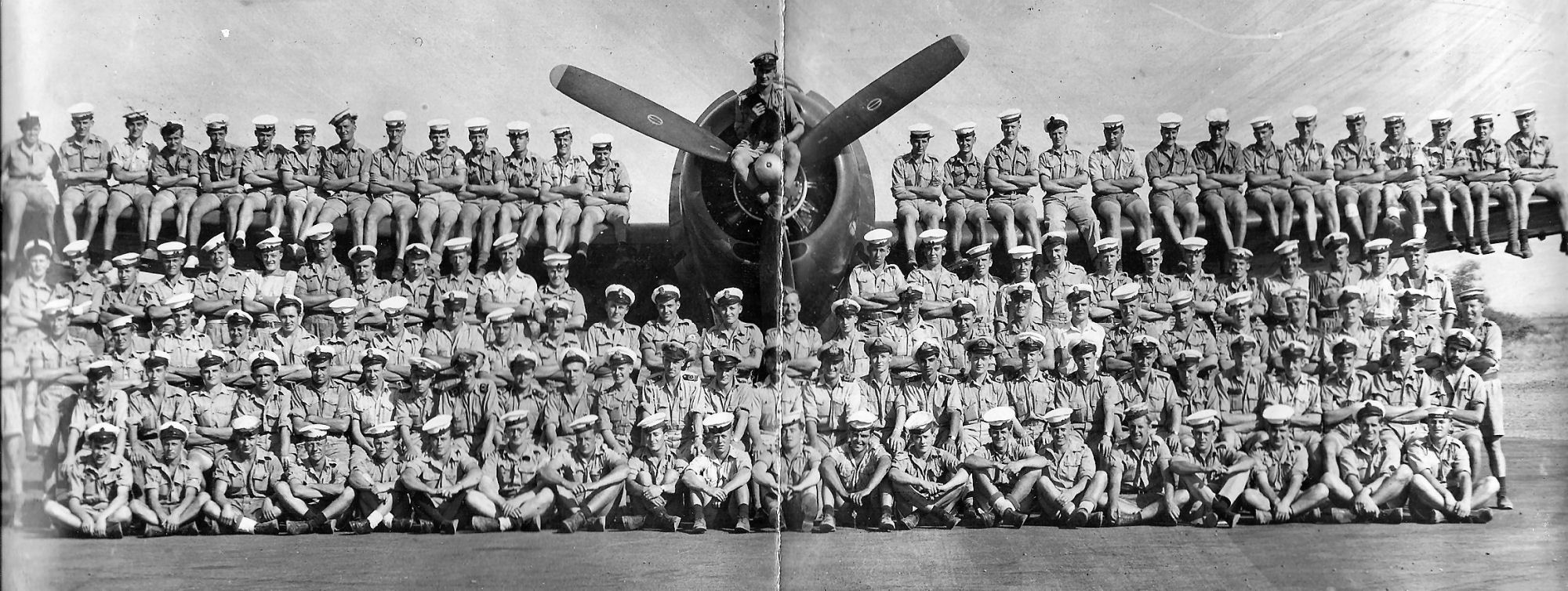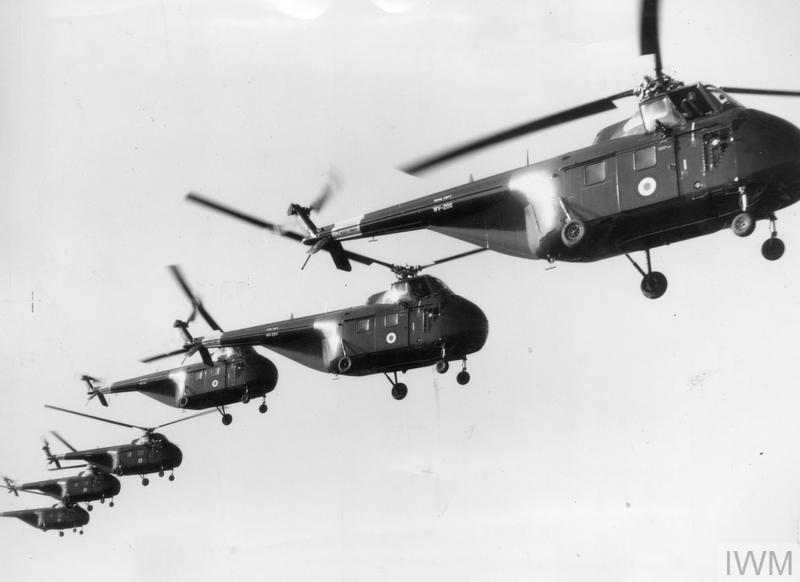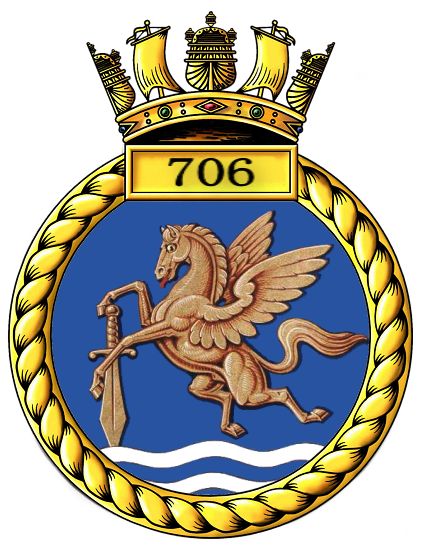



The core personnel of 706 Squadron assembled in the United Kingdom during January 1945, under the command of Lt. Cdr (A) F. C. Nottingham, DSC, RNVR and took passage for Australia on February 2nd 1945.
On their arrival in Australia at the start of March the squadron assembled at
RNAS Jervis Bay, New South Wales, then a satellite airfield operated by
HMS NABBINGTON,
MONAB
I (Mobile Naval Air Base I). On March 6th they moved to
RNAS Schofields, New South Wales, to operate with
MONAB III,
HMS NABTHORPE. Here Lt. Cdr. (A) R. E. Bradshaw DSC** RN arrived to take command. 706 officially commissioned on April 10th 1945 as a Crew Pool & Refresher Flying Training School. There is record of a squadron Avenger, JZ280, flown by Sub-Lt D. M. Bayne, RNVR which swung on landing, braked hard and nosed over at
RNAS Nowra on March 13th.
706 squadron was tasked with providing refresher training for aircrew arriving in Australia from the United Kingdom and Ceylon; it also undertook conversion training for pilots changing aircraft types. It was to become a large unit, eventually reaching a total strength of 36 aircraft. Its Initial equipment comprised of 3 each Avenger, Corsair, Hellcat and Safire, additional aircraft being added as the volume of pilots attending the school increased. Permanent squadron officers totalled 7 at thee unit’s peak, reducing to 5 after V - J Day.

The personnel of 706 NAS at RNAS Schofields.
There were three flying accidents during June; Sub-Lt J. D. Pywell, RNVR braked hard and nosed over in Hellcat FN373 on the 8th, Avenger FN870, flown by Lt D. J. Holmes RNVR suffered engine failure after take-off and managed to return to the runway but made a bad landing on the 16th. Lt H. H. Salisbury, RNVR flying in Seafire LR789 found his starboard undercarriage leg was jammed and not fully down on the 26th, but he land safely. On August 9th Lt P. F. McClintock RNVR nosed over in Seafire LR789 after his starboard tyre burst and the aircraft swung to port.
The squadron moved to RNAS Maryborough, Queensland, on August 28th to operate with MONAB VI, HMS NABSTOCK. Lt. Cdr. (A) D. M. R. Wynne-Roberts RN assumed command on the 31st and the unit’s equipment strength began to be gradually reduced as surplus aircraft were flown to RNAMY Archerfield, Brisbane, until by mid-October it had only two of each type left. When the new light Fleet Carriers of the 11th Aircraft Carrier Squadron arrived in Australia in August 1945 the squadron received Barracudas in August, and Fireflies in October so the squadron now operated examples of all British Pacific Fleet front-line aircraft.
There were three flying accidents while the squadron was based at RNAS Maryborough; On September 8th Lt D. R. Crabtree, RNVR was forced to make a forced wheels-up landing in a farmer's backyard after the throttle linkage of Hellcat FN378 became disconnected at the bulkhead. On the 28th of September Avenger JZ617 flown by Lt C. B. H. Barford, RNVR suffered and undercarriage collapse landing at RNAS Nowra. The following day Sub-Lt N. Williamson, RNVR swung on landing at Maryborough in Corsair JT313 and ground looped causing a wing and tailplane to strike the ground.
During October it had been announced that a rationalization of RN air stations in Australia would result in several stations closing and some MONABs being reassigned; MONAB VI at Maryborough was to relocate to RNAS Schofields by November 15th replacing MONAB III which was to pay off, and MONAB V, HMS NABSWICK at RNAS Jervis Bay would replace MONAB I at RNAS Nowra. 706 was to relocate to RNAS Nowra ahead of this. Having completed its downsizing the unit moved there on October 24th 1945, and a new commanding officer, Lt. CDR (A) C. A. Fraser, RN was appointed.
There were three more flying accidents during closing months of 1945; on November 6th Sub-Lt R. Roberts, RNVR and his Observer Sub-Lt M. G. Henry, RNVR landing in Firefly MB549 touched down with drift causing the starboard oleo to collapse, the aircraft nosed up and skidded along the runway on its starboard wing. Three days later Sub-Lt G. R. Rodd, RNVR swung on landing in a cross wind in Seafire NN399 and the undercarriage collapsed. The squadron suffered its first, and only fatality on December 3rd; Sub-Lt L. Sharples, RNVR was killed when his aircraft, Corsair KD864 crashed into the bush 6 miles SE of Nowra and was engulfed in flames. He had been returning to Nowra in formation with two Seafires from a low level cross-country flight and was missed after a scheduled turn.
On January 18th 1946 the unit returned to RNAS Schofields (Now HMS NABSTOCK, MONAB VI) when RNAS Nowra began its rundown to closure. It’s now vastly reduced training task continued with only one aircraft crash, five days after arriving back on the station; Sub-Lt G. R. Harrison, RNVR ran off the runway landing in Firefly MB629, it then swung to starboard and the undercarriage collapsed.
By the start of April 1946
HMS NABSTOCK at Schofields was the only MONAB still in operation in Australia and it was now home to all of the second-line squadrons 702, 706,
723 and
724. These were all disbanded at
RNAS Schofields on May 31st.
HMS NABSTOCK and
MONAB VI paid off at Schofields on June 9th 1946 and the airfield was returned to RAAF custody.
No.706 squadron reformed at RNAS Gosport on September 7th 1953 under the command of Lt-Cdr H. Phillips RN as an Anti-Submarine Helicopter squadron. They were issued with 8 American-built Whirlwind HAS.22s (Sikorsky S-55) and two Hiller HT. Is. The aircrews were trained by 705 Squadron also based at Gosport..

The Whirlwind HAS.22s (Sikorsky S-55 ) aircraft of 706 Sqn. © IWM A 32870
Once operational in October 706 took over the trials task from 705 Sqn which then became the Fleet Air Arm’s dedicated Helicopter training squadron, handing over their two Hiller HT. Is now that crew training was complete. 706 relocated to RNAS Belfast on October 30th 1953 to begin trials in the A/S role evaluating the use of helicopter carried sonar equipment. They went to sea in the New Year, embarking in the Ferry Carrier PERSEUS on January 20th for three weeks of training and exercising with the Joint Anti-Submarine School (JASS) off the Irish coast and Portland; on February 9th they exercised with Type 15 Anti-Submarine Frigate HMS RELENTLESS before disembarking to RNAS Eglinton on the 10th.
There were only two aircraft accidents during the squadrons short history; on January 22 1954 Whirlwind WV218 piloted by the squadron C.O. was damaged while landing on PERSEUS , the Ship rolled and the main rotor blades struck and damaged the tailcone. On February 19th while ashore at RNAS Eglinto WV201 also suffered damaged tailcone when a main rotor blade dipped when Lt G. H. Spetch engaged the rotor on startup.
The squadron arrived back at RNAS Gosport on March 1st 1954 having competed their trials program; on March 15th 706 squadron was disbanded and redesignated 845 Sqn.
Content revised: 23 October 2022
Additional sources:

None
706 (1)
Avenger I Mar - Oct 1945
Avenger II Mar Sep 1945
Avenger III Feb - Mar 1946
Barracuda II Aug 1945 - Mar 1946
Corsair II Mar 1945 - Dec 1945
Corsair IV Dec 1945 - Jul 1946
Firefly 1 Nov 1945 - Jan 1946
Hellcat I Mar - Sep 1945
Hellcat II Dec 1945 -1946
Seafire III Mar - Nov 1945
Seafire XV 1946
706 (1)
Lt. Cdr (A) F. C. Nottingham, DSC RNVR Feb 45
Lt. Cdr (A) R.E. Bradshaw DSC** RN
6 Mar 1945
Lt. Cdr (A) D.M.R. Wynne-Roberts RN 31Aug 1945
Lt. Cdr (A) CA Fraser RN 22 Oct 1945
Squadron disbanded 31 May 1946
None
© 1999-2025 The Royal Navy Research Archive All Rights Reserved Terms of use Powered byW3.CSS
Press F5 to refresh the page after posting your comment or to hide the form
Comments (0)